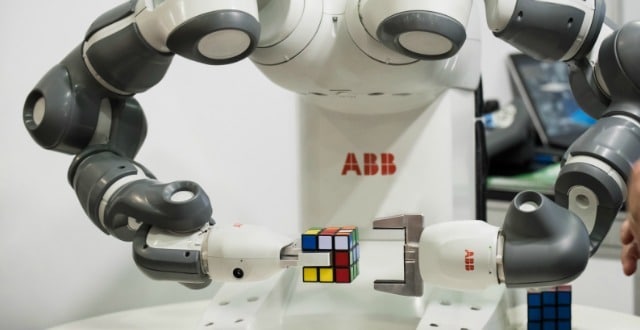The reasons for the relatively slow uptake of robots are not difficult to see. While a small number of large producers have invested heavily in fully automated production, the smaller artisan food manufacturer will find it hard to visualise a use for robotics in a production process that still largely mimics a scaled-up domestic kitchen – let alone justify the investment.
Where there has been considerable success in using robotic technology has been at the end of the production line, where pick-and-place and palletising robots have accelerated the packaging process way beyond the capabilities of any human workforce.
However, the latest advances in robotics and automation technology are creating opportunities for the increased use of robotics in food manufacturing at all levels.
Like all sectors within the so-called fourth industrial revolution, food manufacturing 4.0 is driven by data. And advances in sensor technology, from vision systems to metal detectors, mean that increased levels of data are available to guide robotic operations with no need for operator intervention.
The ability for a system to recognise that, for example, an apple is still an apple, even though it is slightly different from the previous apple, allows robots to move into areas of production that would previously have required manual intervention.
At the other end of the scale comes the arrival of the cobot – or collaborative robot – a machine designed to work alongside a human worker as a form of “third hand”.
Automation using small low-cost easy-to-program cobots is particularly appealing for small- and medium-sized companies, particularly because of their versatility. This ability for a cobot to be simply switched from one task to another gives these companies the ability to react to volatile markets and improves competitiveness.
What’s more, cobots prove popular with the human workforce. Rather than being seen as a threat, they are appreciated for taking over physically demanding work and giving staff time and space for more valuable tasks.
About the author: Laurence Marchini
Laurence Marchini began his career as a technology journalist with the Institution of Electrical Engineers in 1980. He is now Editor of Industry Update, Australia’s leading manufacturing magazine and website.
Looking for robots?
Check out the exhibitor list to see the types of robotic technology will be on display at the show this year.

